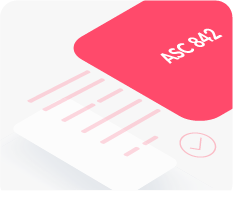Frequently asked questions

About EZLease
Deadlines
Lease accounting standards
Lessor accounting
Reporting
Implementation
About EZLease
About EZLease
FASB, IASB and GASB set up new rules for lease accounting following issues with reporting at companies like Enron and WorldCom. Now companies are required to capitalize most of their leases on their balance sheet and report the corresponding assets and liabilities.
According to EY, AROs are “legal obligations associated with the retirement of long-lived assets that result from the acquisition, construction, development and/or the normal operation of such assets.” AROs require specialized accounting that is provided by EZLease.
EZLease enables ongoing, self-service bulk import for new leases and in-life lease events, including payment adjustments.
EZLease can be set up in hours and our customers typically get compliant in less than a day.
EZLease is a cloud-based application and can be accessed from all major, current browsers.
EZLease makes compliance fast and simple for everyone. It is very cost-effective (no one likes the word cheap!) and comes with a money-back guarantee. Sign up for our free trial here to see for yourself.
Because in a market with choice, sometimes the best approach is to put your money where your mouth is! So, you have 30 days to determine for yourself whether we are right, and if not, you’ll get a refund if EZLease doesn’t meet your lease accounting needs.
We charge per year based on lease portfolio size and offer multi-year subscriptions. See pricing here.
EZLease has over 15 years experience of lease accounting implementations behind it, covering private, government and public organizations of all sizes. The software was relaunched recently to meet the demand for a simple, easy, cloud-based solution.
EZLease works with a large network of trusted partners who can help with any lease accounting project, including finding and abstracting leases. Contact us to get matched with a partner.
EZLease is owned by LeaseAccelerator.
Deadlines
Deadlines
For private companies, the official effective date for nonpublic entities is now for fiscal years beginning after December 15, 2021, which is essentially January 1, 2022, for organizations with a December 31 year end.
GASB organizations must start utilizing the new standards for fiscal years beginning after June 15, 2021.
For GASB 87, you should consider a one- or two-year lookback to confirm the prior leases were properly accounted for. FASB and IFRS do not mandate such a lookback, but leaves the decision to each organization.
Lease accounting standards
Lease accounting standards
The IBR is your cost of capital. Your treasury department or bank can provide you this information. One common approach is to use the interest rate you’d be charged if you were to finance the purchase of the asset rather than lease it.
Often the same policies that apply to public corporations apply to private organizations. The IBR is your cost of capital. Your treasury department or bank can provide you this information. FASB approved a practical expedient by allowing private companies to use the risk-free rate across all leased assets.
No, the ROU asset calculation is the same. It is the present value of the sum of the payments discounted using the IBR, which could be the risk-free rate or a different rate.
Embedded leases are items within a contract that defines the use of a specified asset where the lessee or lessor has control of that asset. These contracts are usually service agreements that contain assets that are exclusive to the lessee.
GASB 96 requires some subscription-based IT agreements to be included on the balance sheet and they are accounted for in a similar way to GASB 87 leases. For example, they are amortized over the life of the contract. Read this blog for more detail.
Leasehold improvements are payments made that need to be amortized over the life of a lease, are a lease incentive, and need to be included but tracked separately.
CAM charges can either be included in the rent payment or separated as a non-lease component.
Initial direct costs are now considered expensed under ASC 842, rather than capitalized, although there can be exceptions.
Lessor accounting
Lessor accounting
One key difference in ASC 842 for lessors is there are three classifications: Direct Finance leases, Sales Type Leases (also finance) and Operating leases.
For lessors, some Items such as the long-term receivables should be on the balance sheet. Also, a sublet is treated the same way as a lessor lease from receivables perspective.
Subleases are handled in almost the same way as a lessor (or owned asset) lease from the receivable side. Naturally, the payables for these leases are different than an owned asset.
Reporting
Reporting
The disclosures in ASC 842 now include operating leases and the associated line items on the balance sheet. Additionally, weighted average discount rates and lease terms are new line items that are required for ASC 842.
This varies significantly, but you’ll need a disclosure report that summarizes all leases with reports that provide the details in each lease. Some auditors will select several specific leases and ask for additional information. For example, the auditors may need to see a report that explains how a lease was classified, the schedule of payments, how the ROU assets were computed, as well as the amortization schedule for some leases.
Implementation
Implementation
There are six key steps to help you get organized for your implementation project:
- Determine staffing model
- Confirm required data
- Find leases
- Abstract lease data
- Attest data
- Load data
Read this eBook for more planning recommendations.
It is best practice to have at least two individuals from accounting, including the controllership who often owns the process. Other key members might include individuals that are contributing data such as real estate administration, fleet management, legal and operations personnel.
Try EZLease today!




